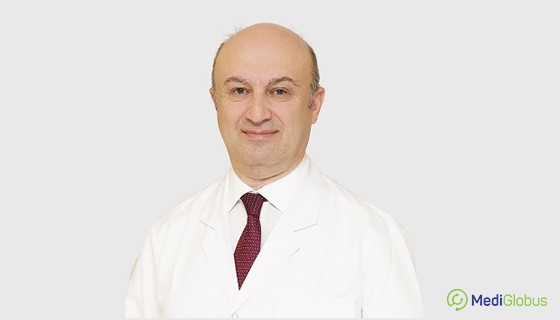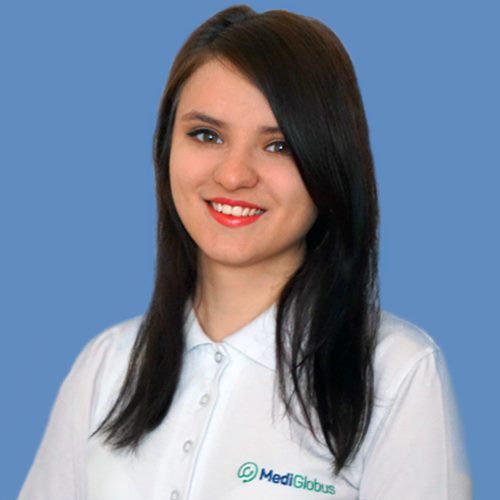
A deep brain stimulation procedure or DBS is one of the most impressive advances in neurosurgery. It helps where medication is powerless and returns a person to their former lives, even with strong manifestations of movement disorders. MediGlobus conducted an exclusive interview with a neurosurgeon and professor Selcuk Peker from the Koc University Hospital. The doctor told us in detail about the DBS procedure, its areas of application and the effectiveness of treatment.
Hello, Dr. Peker. You have established yourself as an experienced neurosurgeon and have performed many deep brain stimulation procedures. Tell us what DBS is?
DBS means deep brain stimulation. We use this kind of surgery for Parkinson’s disease, dystonia and essential tremor. With DBS surgery we apply an electrode in the brain to the very small targets – small nuclea in the brain and give continuous electrical energy to that area. So, it changes the behaviour of neurons in that area. And patient’s complaints related to those diseases are getting well after the surgery.
What diseases do you perform deep brain stimulation for?
Mostly we use DBS surgery for Parkinson’s disease, essential tremor and dystonia. Of course, there are some other diseases can be treated with the DBS surgery. For example, obsessive-compulsive disorder, depression, sometimes epilepsy. But there are few such patients, most of them are with the first three indications.
Dr. Peker, you mentioned more than once that the symptoms of Parkinson’s disease are relieved with DBS. Is this procedure prescribed at any stage of the disease, or only at the last?
For Parkinson’s disease, dystonia, and essential tremor, of course, the patient should be treated with medical treatment at the beginning. And if the patient does not respond to medical treatment, then at the consilium we evaluated the patient and his response to medical treatment and decide about the surgical treatment. Of course, not all patients are a candidate for surgery. But for most of the patients surgery really can help their diseases.
You interestingly talk about the procedure. How effective is it for patients? Does their life improve after DBS?
For Parkinson’s disease the aim of the procedure DBS is to have a good quality of life for the patient. We can not treat Parkinson’s disease. Of course, the patient should continue his life with Parkinson’s disease. But the complaints are a little bit lower than before.For dystonia and essential tremor, they are mostly esthetique diseases and most of the patients with these three diagnosis, more than 80% are happy with their DBS surgery.
Dr. Peker, could you give an example of a real person whose quality of life has improved after the DBS procedure?
Many years ago I operated the patient with tremor. She was a young girl, a 14-years old girl and she was with a left-sided tremor of huge frequency and a huge amplitude of tremor. And it was a very bad situation for her. Then we applied DBS surgery for her, it was 15 years ago. Now she is much better than before. She is working, she has a good blog on the Internet and she is very happy. And of course, when I see her, I’m getting very happy too.
This is a wonderful story. We are happy for this girl. I think our readers will be interested to know what stages of the operation it went through. Tell us the whole process, starting from preparing for DBS.
For movement disorder surgery, like Parkinson’s disease or essential tremor, the indication should be evaluated by a consilium. There is a neurosurgeon, neurologist, psychiatrist, psychologist, physiotherapist, physical therapy specialist. All these specialised doctors are in the consilium. And the patients are evaluated in this consilium. And if the patient’s clinical situations is finded okay for surgery, if the patient received enough amount of medical treatment – we decided to continue with DBS surgery. Than we hospitalise the patient and do the surgery in 1 day and night of the day patient should stay in the intensive care unit. Then the patient stays in the hospital for 4 to 5 days. Then she or he can go home. And after 2 or 3 weeks we begin to open a generator and give an electrical stimulation to the desired area.
And of course, if the patient has tremor we can see the response very early. For bradikinesia, for the difficulty walking in Parkinson’s disease in moderate period and for dystonia we can see a response at the late stage. After some months we can see the benefit of the surgery.
If you want to receive a treatment program from Koc University Hospital, write to the MediGlobus coordinators. We will help you organize treatment in Turkey!





